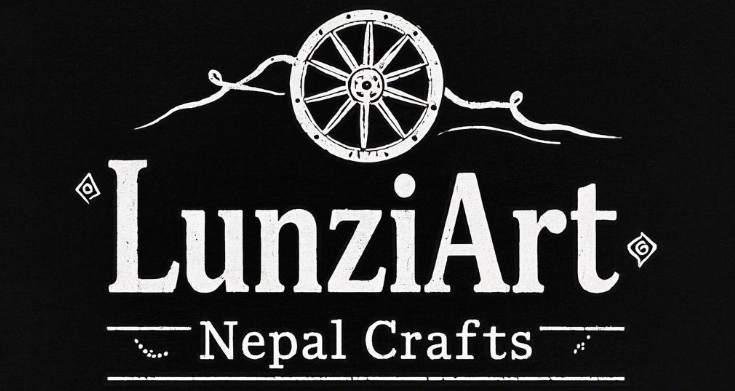Sacred Artistry of Life Buddha Thangka

The Life of Buddha Thangka is one of the most intricate and creative works of art in the Tibetan Buddhist tradition. These painstakingly crafted paintings illustrate how Siddhartha Gautama, a prince, became an enlightened being, showcasing the major moments that shaped Buddhism's founding teachings. In each brushstroke of authentic thangka art, there is a history that extends far beyond decoration—a tradition of centuries of spiritual significance and artistic excellence.
Origin and Historical Significance

Nepali thangka painting can be traced back to ancient Buddhist traditions predominant in the Himalayan regions. The Sanskrit word thangka is translated as "recorded message," which aptly describes these sacred scrolls that have served as visual narratives across generations to practitioners. Portable style paintings have historically been used to teach Buddhism to mobile communities with irregular access to monasteries. The Life of Buddha Thangka was painted with the specific intention of helping devotees meditate on the transformation of the Buddha from a worldly life to the state of enlightenment.
Artistic Elements in Buddha Life Thangka

The handmade thangka from Nepal is distinguished by its artistic elements, which are deeply set apart from other Buddhist iconography. The artistic expression generally follows a chronological sequence, in which the central figure of the Buddha is accompanied in different episodes from his life. Master artists use their palette, which largely includes minerals and natural pigments, to vividly paint their subjects in coloristic harmony that, through the centuries, has stood the test of time.
The Symbolism and Iconography

Every element in a Tibetan Buddhist thangka has a symbolic meaning. The postures of the Buddha, known as mudras, impart teachings and signify spiritual states. For example, the earth-touching gesture (bhumisparsha mudra) marks the moment of his enlightenment, while the gesture of teaching (dharmachakra mudra) stands for his first sermon at the Deer Park. Background elements such as lotus flowers, bodhi trees, and celestial beings further enrich the narrative with multiple layers of meaning, rewarding the contemplative viewer.
"Within each authentic thangka painting lies, not merely pigment and canvas, but the living wisdom of the Buddha's journey—a visual dharma that speaks directly to the heart of the practitioner."
Creation Process of Hand-painted Thangka
The creation of hand-painted thangka represents a meditation in itself. Indeed, those Nepali artisans, from whose lineages these techniques have been kept for generations, are exacting in their standards, which combine artistry with spiritual discipline.

Traditional Techniques
The commencement entails the preparation of a canvas, usually made of cotton, treated with a mixture of natural materials, which provides a smooth surface. The artist sketches the compositions following iconometric principles, that is, mathematical proportions that ensure the figures achieve spiritual accuracy. The application of the paint comprises layers of mineral pigments, whilst gold more often accents the divine. The final consecration elevates the painting beyond a mere picture, transforming it into an object of veneration, a realm infused with spiritual energy.
Key Episodes Depicted in the Life of Buddha Thangka
The narrative richness of Buddha Life Thangka offers its audience a near-complete visual biography of Siddhartha's life.
- Birth at Lumbini Garden, where the infant Buddha took seven steps and declared his final rebirth.
- Renunciation of royal life after encountering the Four Sights: old age, illness, death, and asceticism.
- Meditation under the Bodhi tree and confrontation with Mara.
- Attainment of enlightenment and transformation into Buddha.
- First sermon at Deer Park, setting the Dharma wheel in motion.
- Parinirvana, the Buddha's final transcendence beyond physical existence.
Selecting Authentic Thangka Art
For discerning collectors and practitioners, understanding the characteristics of authentic thangka art is crucial for selecting a genuine piece. True handmade thangka creations from Nepal would show attention to detail, proper proportioning according to traditional iconometry, and natural pigments, which present slight variations that are impossible to imitate by machine.
Preservation Considerations
Using correct methods for preservation extends the life of these treasured pieces of art. Ideally, thangkas should be hung where direct sunlight and high humidity cannot reach them. Silk brocade framing is the traditional mounting method, which adds to the aesthetics while providing protection. When not hung, thangkas need to be rolled and wrapped in a breathable cloth to maintain the integrity of the pigment and canvas.
Through the fine medium of thangka painting, the immortal path of the Buddha's enlightenment continues to inspire and teach practitioners today, connecting ancient knowledge with modern spiritual practice.
Discover more Life of Buddha Thangka








